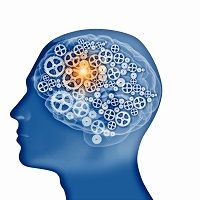Expectation Versus Reality of Pain Makes All the Difference
The saying "it's all in your head" may not be that far off when it comes to pain, according to a new study measuring brain activity.

The saying “it’s all in your head” may not be that far off when it comes to pain, according to a new study measuring brain activity.
First author Fadel Zeidan, PhD, and his colleagues from the Wake Forest Baptist Medical Center evaluated how patients’ expectation of pain directly coordinated with the pain they actually experienced. The research addressed what happens when a patient is led to believe they will experience one level of pain but instead gets another.
“This effect shows us how important it is to manage people’s expectations when it comes to pain,” Zeidan, assistant professor of neurobiology and anatomy at the center, said in a news release.
In order to uncover which regions of the brains were activated, the study used 15 health participants. They were conditioned to expect either mild or intense pain while being shown the written words “low” or “high.” Thermal probes were attached to the subjects’ legs and either 47 degrees C (116.6 F) or 50 degrees C (122 F) were applied. However, during the testing sometimes the visual cues matched the actual heat level while other times it was switched. The researchers measured brain activity at the exact moment that they realized incorrect cue.
“This allowed the researchers to assess how the experience of pain overrides the very powerful influence of expected pain when there was a difference between cues and ensuing thermal stimulation,” the statement explained.
The participants reported the discomfort using a plastic sliding scale while functional neuroimaging scanning measured the brain activity.
“We found that multiple regions within the left posterior parietal cortex are differentially engaged when the expectation of an impending painful stimulus is violated,” senior author Robert Coghill, PhD, explained.
The pain-associated brain regions were apparent in the visual, auditory, and taste stimuli, according to the research published in PAIN.
These findings revealed that it’s not enough to write a prescription and send a patient on their way because psychological factors play such a prominent role in the type of pain. Trust plays a major role when it comes to prescribing medication to manage pain. This study provides another perspective on the crucial patient-physician relationship — a factor that has recently been questioned when it comes to the opioid epidemic.
“Knowing how vital trust is to the doctor-patient relationship, we hope these findings will help physicians and other caregivers have a better understanding of the importance of how what patients expect affects their experience of pain,” Zeidan said.